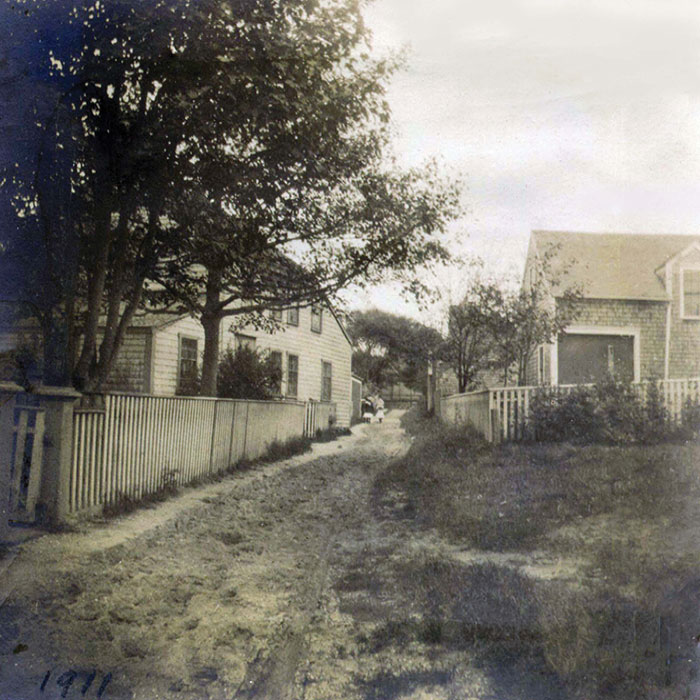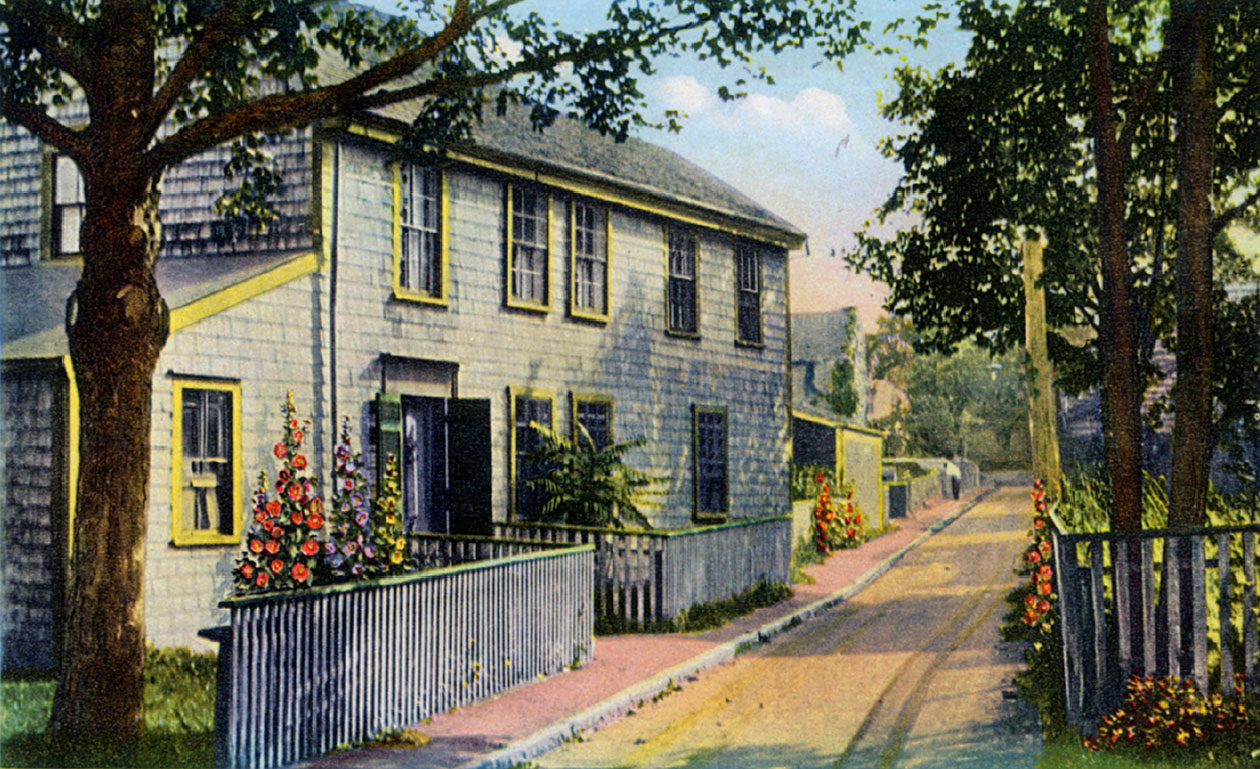The home dates back to 1746, when George Hussey built it for his daughter, Dinah (1727–63), and son-in-law Reuben Folger (1722–1808) on land he had inherited in 1718 from his father, Stephen, in the twenty-fifth Fish Lot. He deeded to the young couple the land under their house extending ten feet from the foundation on the east, north, and west sides. On the south side, he stipulated a highway, one rod [16.5 feet] wide, a lane known variously as Moose Lane, Mooers Lane, Moores Lane.
The original structure, according to a Preservation Institute: Nantucket survey conducted in 1985, was a two-story house, two rooms deep, with a three-bay façade. Both chimney and door were on the west side of the house, allowing for a future addition that would take advantage of the situation of the chimney.
Reuben Folger was a blacksmith, a trade that was linked to the whaling industry. He and Dinah had six children before she died in 1763. In 1795, Reuben transferred the house to daughter Rebecca Folger Chase (1758–1833) and her husband Joseph Chase (1752– 1833), retaining a life right for himself. Joseph was a mariner and merchant; he and Rebecca had eight children. They sold the house to son George H. Chase in 1831.
The house had expanded by this time, although it is difficult to determine the extent of the expansion from the footprint of the building on William Coffin’s 1834 Map of the Town of Nantucket. What is apparent on that map is the huge conglomeration of buildings on the east side of the house, where Zenas Coffin had a candle house, cooperage, and other buildings essential to a large oil-manufacturing establishment. East of the Coffin oil works was a Quaker Meeting House (removed in 1863) facing Fair Street.
When George H. Chase (1792–1857) purchased the family home for $100 in 1831, he and wife Rebecca Coffin (1799–1832) had two young sons, ages one and ten. Rebecca died a year later. George was the third husband of his second wife Judith Macy (1801–72), who lent her name to the lane in the late nineteenth century. After their stepmother died in 1872, Joseph and Rowland, who were living in Boston and California respectively, sold the house, at auction, to Nathaniel Fitzgerald for $185. Five days later he sold the property to Lydia Small for $350.





